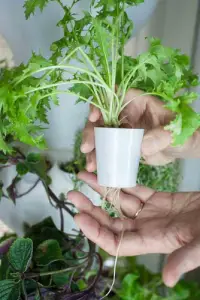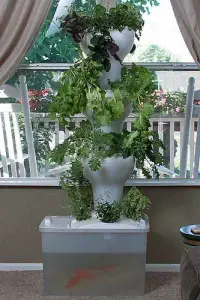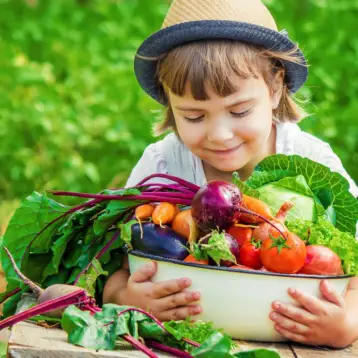Through their innovative vertical gardening products, Foody Garden Towers aim to provide the world with sustainable food solutions that improve our quality of life, protect the environment and secure our future.
The Problem
With over half of the world’s 7 billion people residing in urban settings, food consumption and waste has reached an all-time high. And while the accelerated rate at which the population continues to grow is alarming, the more troublesome fact remains our misuse of resources. Essentially, less is being grown resourcefully, while more is being consumed. Vertical farm owner, James Cannon, highlights the extent to which urban dwellings have contributed to the current consumption issues by explaining:
If cities produced just ten percent of the ground crops they currently consume, by employing sustainable indoor vertical farms and greenhouses to do so, then nearly half of the damaged portion of the Brazilian rainforest could theoretically be restored (340,000 square miles worth) and a significant amount of carbon would be sequestered as the result.
By just producing 10% of what they consume, cities could amazingly eliminate a huge portion of their carbon footprint.
A Solution For Urban Gardening
Companies such as Foody Towers are helping this number become a reality by providing products that promote sustainable gardening methods with limited space and resources needed. These towers are also easy to setup, take down and replant when needed. The Foody system consists of stackable pods, containing 12 removable “net pots”, which require no soil. This easy-to-use, indoor/outdoor garden system allows the user to grow their own fruits and vegetables either hydroponically or aquaponically.
Growing Hydroponically
Hydroponics is a subset of hydroculture-a way of growing plants without soil that emphasizes the use of water. Hydroculture derives its
meaning from the Greek language-ὕδωρ (hudōr)- which literally means water culture. Unlike other subsets of hydroculture, hydroponics uses mineral rich solutions to aid the development and robust growth of plants and vegetation.
There are two main types of hydroponics: solution culture and medium culture. Solution culture strictly uses nutrient solutions and does not use a solid medium for the roots, whereas medium culture uses various solid mediums such as hydroton (clay balls that have been kiln dried), rockwool, or coconut fiber for the plant roots.
There are many benefits to growing hydroponically instead of with soil. These include, but are not limited to:
- Faster plant growth
- Better control over the development of plants
- Less maintenance
- Reduced risk of soil-laden pests and diseases
- Less mess
The Foody 12 demonstrates just how effective and sustainable growing plants hydroponically can be. This Foody Tower can grow up to 56 plants in a little more than two square feet of floor space while encouraging rapid plant growth by circulating nutrients and water directly through the plant roots.
Growing Aquaponically
As the name suggests Aquaponics cultivates food through the combination of aquaculture and hydroponics. This method incorporates aquatic animals into the cultivation of plants in water. It is highly environmentally friendly and extremely productive. Aquaponics entail using the byproducts produced by fish kept in a tank to feed the plants with the nutrients they need to grow. The excretions from the fish lead to increased ammonia in the water which becomes deadly to the fish unless removed. Added bacteria help the nitrification process and turn the ammonia into useful nitrates for the plants to absorb. The plants in turn help clean the water for the fish. Aquaponic systems such as the Foody 12 do not typically discharge or exchange water under normal operation, but instead recirculate and reuse water very effectively.
Benefits of Urban Gardening & Vertical Farming
Foody Towers and vertically integrated gardens ensure that we are using both our resources and spaces efficiently, while reducing environmental and economic costs associated with growing foods. This sort of vertical farming allows for:
- More efficient use of space
- Decreased expenses
- Better light distribution
“Moreover, growing [this way] does not pollute the environment. There is no agricultural run-off, no contamination of ponds, streams and rivers or water-table. Hydroponics uses 90% less water than traditional farming. Since everything is self-contained, water and fertilizer are recycled until absorbed by the plants.”
Foody Towers are paving the way for a more sustainable future. Companies such as Microsoft have jumped on board with Foody Towers to alleviate some of their environmental impact in the work environment.
We would like to see how these develop in the future and incorporate other renewable energy resources into the food growing process.












